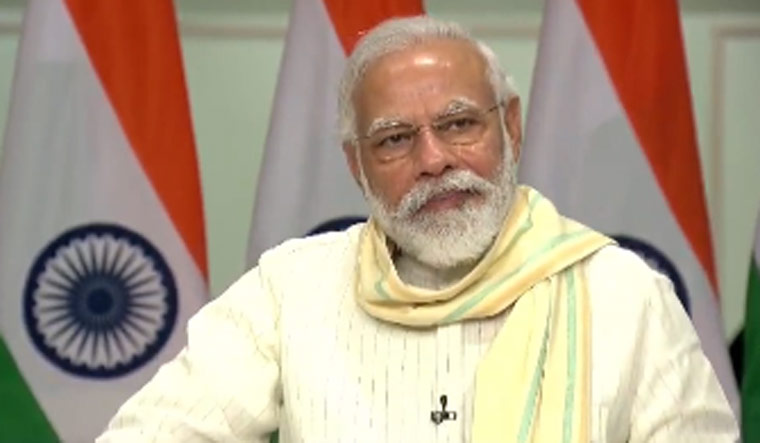After Jawaharlal Nehru, Indira Gandhi and Manmohan Singh, Prime Minister Narendra Modi is now the fourth longest serving prime minister in India. He is also the longest serving non-Congress prime minister, outstripping Atal Behari Vajpayee. "Today, PM Narendra Modi becomes the fourth longest serving PM in the history of India! He now also holds the distinction of being the longest serving non-Congress PM. Vajpayee ji served for 2,268 days, with all his terms put together. Today PM Modi has surpassed that duration," BJP IT department in-charge Amit Malviya tweeted.
Today, PM Narendra Modi becomes the fourth longest serving PM in the history of India!
— Amit Malviya (@amitmalviya) August 13, 2020
He now also holds the distinction of being the longest serving non-Congress PM.
Vajpayee ji served for 2,268 days, with all his terms put together. Today PM Modi has surpassed that duration.
As PM Modi crosses another milestone, and with several crucial state election cycles ahead for the BJP, it is pertinent to analyse his popularity at this time of great tumult. As the coronavirus, along with its associated lockdowns, ravaged the country, there has been a severe financial downturn, with economic fears weighing first and foremost on the public psyche. Infosys founder N.R. Narayana Murthy recently flagged fears that the country's GDP growth may touch its lowest since Independence. In June, the RBI had predicted that the GDP growth in 2020-21 will be in the negative territory.
A nationwide lockdown was first imposed from March 25 for 21 days in a bid to contain the spread of the novel coronavirus. The lockdown was first extended till May 3 and then again till May 17. It was further extended till May 31. This was followed by ''Unlock-1'', ''Unlock-2'' and "Unlock-3" phases during which a large number of social, economic, religious and sports activities are being allowed.
The quality of India's economic growth has severely declined, according to reports, demonstrated by financial stress among rural households, relatively low productivity and weak job creation. A survey taken from March to May claimed that almost 84 per cent of Indian households saw their incomes fall under the lockdown; 100 million Indians had lost their jobs since that time, according to it.
What do the numbers tell us?
Despite all the political challenges, studies show us that PM Modi remains one of the most influential leaders of this generation. Take the case of a national rural survey conducted by media platform Gaon Connection and New Delhi-based Centre for Study of Developing Societies (CSDS). The results, published this week, showed that an overwhelming majority of rural Indians were satisfied with the steps taken by the Centre to fight the COVID-19 pandemic, despite facing hardships that forced some to sell land, phones and watches, and take loans from neighbours to get by. This comes on the back of a June ABP-CVoter study which put PM Modi as the prime candidate of India's choice while dealing with national security issues. 73.6 per cent Indians said they had more confidence in Modi than opposition parties in handling the China crisis; merely 16.7 per cent responded in favour of the opposition.
The Gaon-CSDS survey, which could be a litmus test ahead of the Bihar elections, laid bare the intense hardships that the economic downturn levied on Indian villages. One in every eight rural households surveyed reported frequently having gone without eating food the entire day during lockdown due to lack of money and resources. The survey found that about 23 per cent of rural Indians borrowed money during the lockdown, eight per cent sold a valuable possession (phones, watches), seven per cent mortgaged jewellery, and five per cent sold or mortgaged land. Seventy one per cent surveyed households reported a drop in total monthly household income during the lockdown months.
Seventy four per cent of rural Indians reported they were satisfied with the steps taken by the Modi government. Of those who supported the Modi government's steps, 37 per cent said they were "very satisfied", 14 per cent respondents said they were "somewhat dissatisfied", and seven per cent said they were "very dissatisfied". According to the survey, neither the coronavirus nor the lockdown seem to have adversely impacted the perception of rural citizens about the Modi government at the Centre.
73 per cent, or over seven out of ten respondents interviewed in rural areas, rated PM Modi's approach to migrant labourers as "good". Again, the migrant labourer factor will be a gamechanger in the upcoming Bihar polls.
When it came to the lockdowns, only 23 per cent or around one of every four were of the opinion that the lockdown had been bad (nine per cent very bad and 14 per cent bad). While 40 per cent respondents said the lockdown was "too harsh", 38 per cent said it was "adequately harsh", 11 per cent said the lockdown should have been harsher. Only four per cent respondents said the lockdown should not have happened at all, as per the findings of the survey.
The numbers are corroborated in multiple other surveys. A May study conducted by the Centre for Marketing in Emerging Economies (CMEE) at IIM Lucknow claimed that, while economic worries dominated the minds of 32 per cent public, 3 out of 5 were still confident in the government actions.


